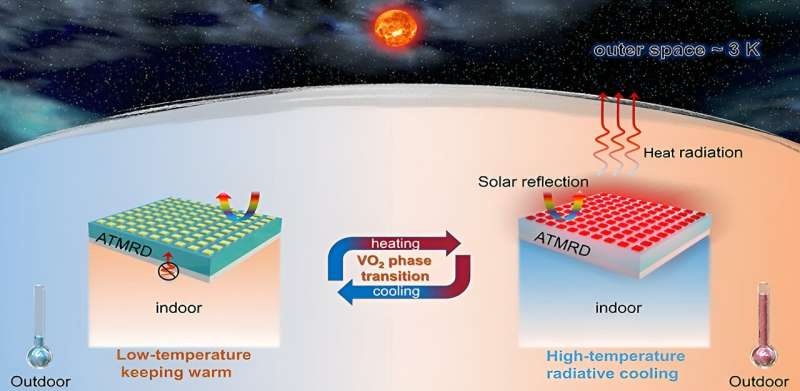Discover the groundbreaking technology that harnesses the power of temperature-adaptive metasurfaces to revolutionize energy-efficient cooling solutions, paving the way for a more sustainable future.

Tackling the Energy Crisis
Amid growing evidence of a global energy crisis and the increasing impact of climate change, sustainable energy management solutions have never been more important than they are now.
One technology that offers hope for the future is passive radiative cooling which naturally allows an object to cool by emitting heat directly into space, without consuming any more energy. However, typical radiative cooling materials usually suffer from a critical disadvantage -their fixed emissivity.
In a cold ambient temperature, these materials still have high cooling capacities which results in ‘overcooling’ and the heating systems operate more frequently causing a significant increase on energy use. This has prompted researchers to seek a dynamic solution, one that will be capable of adjusting to varying temperature conditions: and they seem to have found it in the shape of an innovative temperature-adjustable metasurface.
The Innovation in Smart Metasurface
A new study by researchers at the Beijing Institute of Technology, published in the journal Advanced Photonics, brings to light a game-changing advancement in this space. The team has created a new form of temperature-responsive radiative cooling technology that is able to flex its cooling capacity dependent upon ambient temperature.
The structure takes advantage of vanadium dioxide (VO2), a material that can change its thermal radiation state. The device boasts a VO2 metasurface — including tiny squares of VO2 that form a period array. Not just does this metasurface design open up the competition for thermal emissivity optimization to be combat with or in balance with solar absorptance, but increases the capacity of emission modulation by increasing its effective varies, thereby improving the overall efficiency and agility of managing intraphase temperature distribution.
The new device, named the Temperature-Adaptive Metasurface Radiative Cooling Device (ATMRD), has important advantages over previous models. With a solar absorptance of only 27.71%, it is 7.54% lower than that of the previous design, while it has an emissivity value of 0.85 at elevated temperatures; which marks a rise in to upto 13.3%. More, it has a emissivity modulation capability that is 20% improved from the previous devices which, more importantly for power savings and approchubg ion migration limits overall overcooling.
Conclusion
The study of temperature-adaptive metasurfaces for radiative cooling is a revolutionary work that could lead to more efficient and green thermal management solutions. Advanced materials and the design techniques of researchers, however, promise to lead us into a future where energy-efficient cooling solutions can become an almost unseen — yet pervasive — part of our everyday lives, helping us build cities that are cooler and more sustainable on every level.
